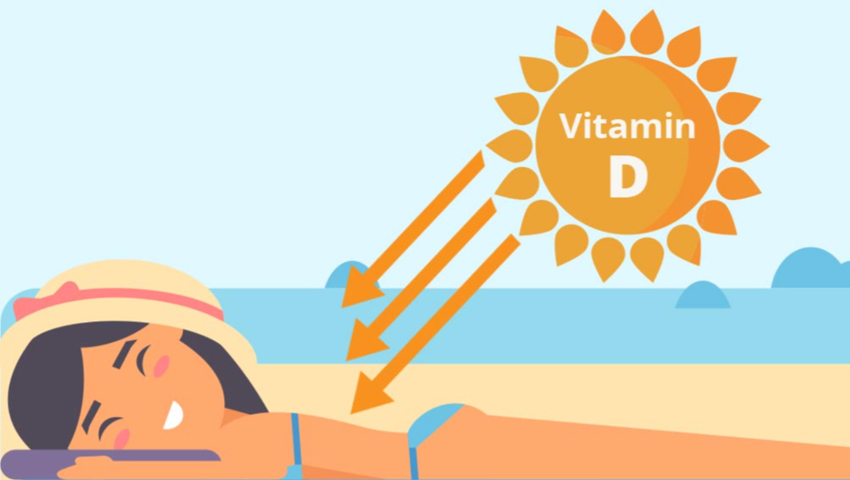
UV and vitamin D
What is vitamin D?
The sun’s UV radiation is both the main cause of skin cancer and the best natural source of vitamin D.
Vitamin D is a hormone that controls calcium levels in the blood. It is needed for strong bones, muscles and overall health.
You can get a small amount of vitamin D from food (about 5–10%). Fish and eggs naturally have some vitamin D, while some brands of margarine and milk have vitamin D added.
Your body can usually store vitamin D for between 30 and 60 days.
UV and vitamin D
Our vitamin D levels naturally fluctuate across the seasons.
It’s important to be physically active and spend some time outdoors.
- In summer, spring and autumn in Victoria, when UV levels are typically 3 and above, only a few minutes of sun exposure is required to help maintain healthy vitamin D levels. Most people won’t be at risk of low vitamin D using sun protection when the UV is 3 or higher.
- In winter, when UV levels are low (typically from May to mid-August in Victoria), it is more difficult to get the recommended UV exposure so vitamin D levels are typically lower at this time. We recommend getting active outdoors in the middle of the day with some skin exposed to help vitamin D production.
Spending longer in the sun will not increase your vitamin D levels. The body only needs a small amount of UV to make vitamin D. Any extra UV exposure will just add to skin damage, not vitamin D. You can’t naturally overdose on vitamin D.
Vitamin D deficiency
Low vitamin D levels and vitamin D deficiency are very different.
Vitamin D deficiency occurs when vitamin D levels are extremely low. It does not always have obvious symptoms but without treatment there can be significant health effects. These can include bone and muscle pain, rickets in children and osteomalacia in adults.
Vitamin D deficiency is not common.
Some people are at greater risk of vitamin D deficiency including:
- People with naturally very dark skin. This is because the pigment (melanin) in dark skin doesn’t allow the skin to absorb as much UV radiation.
- People who avoid the sun due to previous skin cancers, immune suppression or sensitive skin and those who have limited sun exposure, such as nightshift workers.
- People who usually wear covering clothing.
- People who spend a long time indoors, such as those who are housebound or in hospital.
- People who are obese or have disabilities, diseases or medications that affect vitamin D metabolism, including, end stage liver disease, renal disease and fat malabsorption syndromes such as cystic fibrosis, coeliac disease, inflammatory bowel disease.
- Breast-fed babies of vitamin D deficient mothers (formula milk is fortified with vitamin D).
People who may be at risk of vitamin D deficiency should talk to their doctor for advice, which may include supplementation. Deliberate over-exposure to UV radiation is never recommended, even for people who have a vitamin D deficiency.
 Shenzhen Yingfeng Opto-Electronic Co., Ltd.
Shenzhen Yingfeng Opto-Electronic Co., Ltd.
